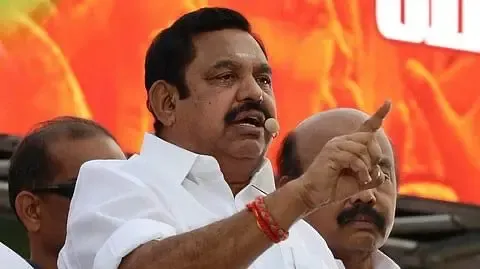How is the Rajasthan Government Enhancing the Civil Aviation Sector to Boost Tourism?

Synopsis
Key Takeaways
- Reduction of VAT on aviation fuel from 26% to 1%.
- 118 helipads across the state, with ongoing developments.
- Significant investments projected in the aviation sector.
- Focus on helicopter services for tourism and emergency response.
- New airstrips and commercial flight routes planned.
Jaipur, July 7 (NationPress) Rajasthan's Minister of State for Civil Aviation (Independent Charge) Gautam Kumar Dak announced on Monday that the state government is implementing crucial measures to invigorate the civil aviation sector, aiming to both promote tourism and create job opportunities.
Among the notable reforms is the substantial reduction of VAT on aviation fuel for Regional Connectivity Scheme (RCS) flights, slashing it from 26 percent to just 1 percent.
During the Northern Region Civil Aviation Ministers’ Conference in Dehradun, Dak emphasized that the state has allocated free and unobstructed land to the Airports Authority of India (AAI) for constructing the Kota Greenfield Airport and for enhancing the Kishangarh Airport.
“Similar land allocations are underway for expanding the Udaipur Airport and establishing a civil enclave at Uttarlai (Barmer),” he mentioned.
Highlighting the potential of helicopter services in Rajasthan, Dak revealed that there are currently 118 helipads spread across the state, with new ones being developed at district headquarters, major tourist destinations, and critical emergency medical locations.
“Plans are being drafted for helicopter-based tourism, spiritual travel, and joy rides, along with developing a helicopter emergency medical service (HEMS) model,” he stated.
He called on the Centre to assist in formulating a viable operational model and standardized protocols for these services. Dak also pointed out districts such as Udaipur, Kota (Chambal), Banswara, and Tonk (Bisalpur) as potential sites for seaplane operations.
The Minister urged the Central government to evaluate their feasibility and integrate them into the RCS scheme.
He underscored the strategic importance of the RCS for Rajasthan, a state celebrated for its rich heritage, religious tourism, industrial hubs, and educational institutions. Currently, RCS flights operate from three airports in the state.
“The government has proposed to the Centre to include major destinations such as Mount Abu, Sikar, Sawai Madhopur, Bhilwara, and Sri Ganganagar under the RCS program,” he noted.
To improve connectivity with major metropolitan areas, Dak also requested the Central Government to initiate regular commercial flights from Bikaner, Jodhpur, and Kishangarh to cities like Mumbai, Kolkata, Surat, and Bengaluru.
Rajasthan currently boasts 19 airstrips, varying in length from 3,300 feet to 9,800 feet. These facilities are being utilized for flying training organizations (FTOs), air sports, and MRO (Maintenance, Repair, and Overhaul) activities.
The state is encouraging private investment in aviation through the Rajasthan Investment Promotion Scheme (RIPS) and the successful organization of the Rising Rajasthan Global Investment Summit.
“An operational FTO in Kishangarh is currently training pilots, and a second FTO is expected to commence in Bhilwara by August 2025. Over 10 Memoranda of Understanding (MoUs) have been signed, projecting an investment inflow of Rs 1,500 crore in the aviation sector,” he claimed.
The Minister highlighted that the state government has enacted a comprehensive Civil Aviation Policy in 2024, aimed at the planned and sustainable growth of the aviation sector.
He requested financial assistance, technical support, and collaborative policy-making from the Central government to position Rajasthan as a leading state in aviation-driven development.










